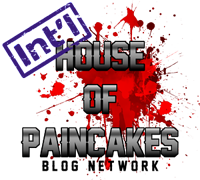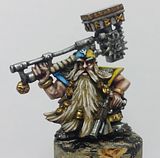The process of painting my Imperial Fists has had its ups and downs, but nothing has been quite so arduous as the tanks. My goal with the Fists was to have each of them look smooth. Most yellow I see is streaky and often times the base coat shows through. I wanted to do my yellows right, and while they're not flashy, I have had very good luck getting things nice and uniformly colored.
The tanks I'm currently working on, though, are really taking some effort. Coat after coat is going on, and progress is being made, but getting perfect yellow on large, flat surfaces is really a trick. Thank goodness for Foundation paints, eh?
One of the articles I read recently on the GW website mentioned painting a White Scars Land Raider with sponges. Does anyone have any experience with this method? I have a Land Raider myself to do next!
End of the Year Battletech
-
I've been tinkering with some rules for 6mm tanks on Battletech hex maps
and then Battletech Aces released and suddenly I'm painting a lot of mechs
again...
6 days ago












Yeah, I used sponges (or rather the foam stuff from blisters) for sponging tanks. It worked best for Tau tanks because of the rounded shape (I found that it gives them a nice kind of shark skin look), but it looked fine on Marine tanks, too - incidentally mine are yellow as well.
ReplyDeleteWhat I did was more or less like drybrushing, only instead of using a brush across hard edges I dabbed it on the flat areas. Basically you pick up the sponge and make sure that the surface you'll use is slightly rounded off by trimming the edges or bending them backwards (I suppose foam balls might be an ideal tool). After putting paint on the foam dab it on a piece of paper to make sure that a) it is not too soaked with paint and b) there are no hard edges.
Next you put your foam to the tank and repeatedly dab the foam across the surface of the vehicle. The less force you use the softer the transitions will be.
Repeat that procedure with 3-4 lighter shades. The final (almost white) highlights across the hard edges can be done with a brush.
The good thing: As this technique is best for flat areas you can experiment on a piece of paper first.
This is fantastic! Thanks for the advice!
ReplyDelete